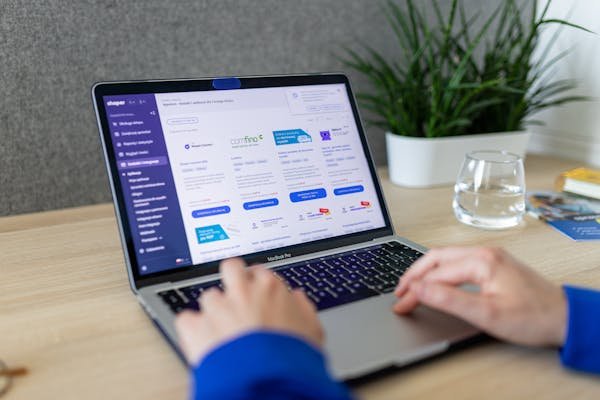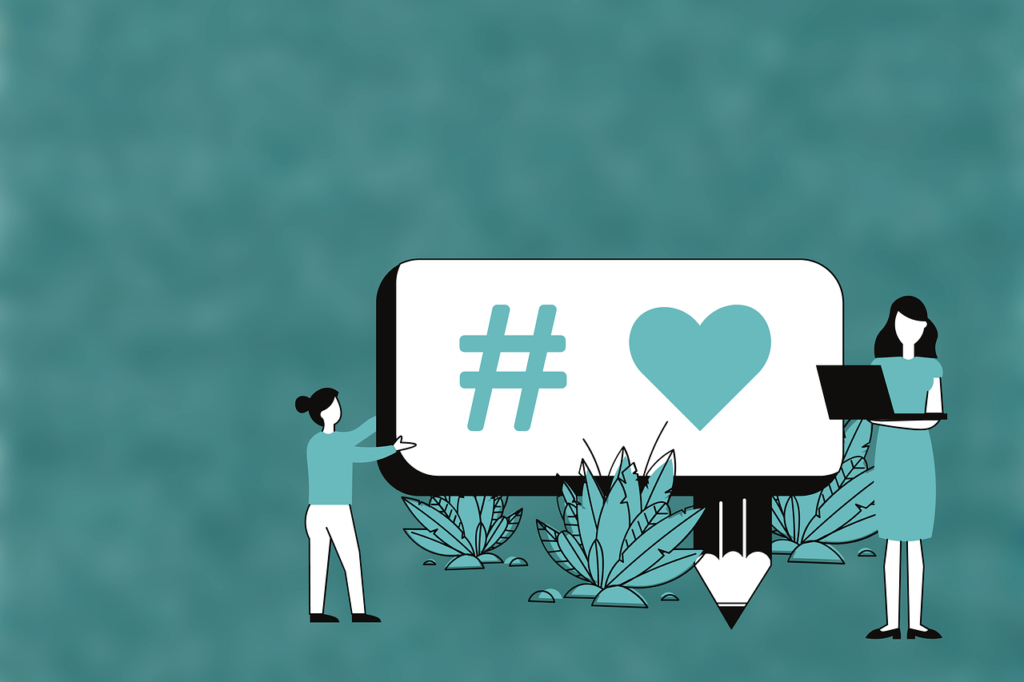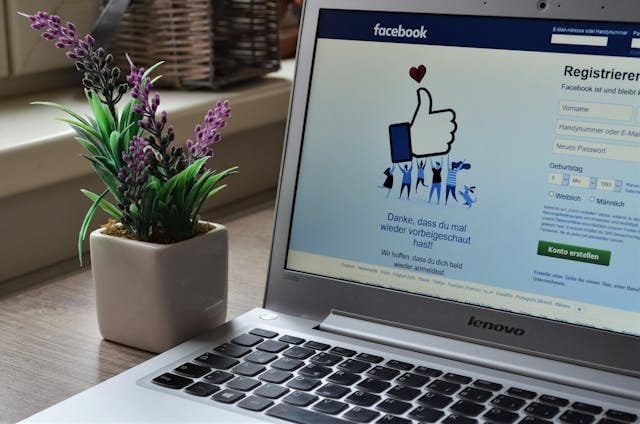Subscription models are everywhere today. From streaming platforms and meal kits to beauty boxes and fitness apps, businesses are discovering the power of subscriptions to create steady revenue and build lasting relationships. But in a world where customers can cancel with a single click, retaining them long-term is the real challenge. For B2C brands, success isn’t just about getting customers to sign up; it’s about making them stay. The key lies in understanding what keeps customers engaged and delivering ongoing value that makes your subscription indispensable. In this article, we’ll explore actionable strategies to retain subscribers, build loyalty, and turn one-time sign-ups into long-term advocates.
Why Retention Matters More Than Acquisition

Retention is the backbone of a successful subscription business, especially in the B2C space. While acquisition may grab the spotlight in marketing campaigns, retention is what determines the long-term health and profitability of your business. For startup founders, understanding why retention trumps acquisition is not only strategic but essential for building a scalable and sustainable subscription model.
Acquiring new customers is expensive. From digital ads and influencer partnerships to promotional discounts, the costs associated with bringing in new subscribers can quickly add up. However, those efforts are wasted if customers cancel shortly after subscribing.
Retention, on the other hand, leverages the investments you’ve already made by maximizing the value of each customer over time. The longer a subscriber stays, the greater their lifetime value (LTV), which directly translates to higher profitability and more predictable revenue streams.
Retention also provides stability in a volatile market. For startups, unpredictable churn can create cash flow challenges and undermine growth projections. A strong retention strategy ensures a steady revenue base, giving you the confidence to plan for future investments, product development, and marketing initiatives.
Without retention, even the most aggressive acquisition strategies are like trying to fill a leaking bucket—unsustainable in the long run.
Moreover, loyal customers spend more. Studies consistently show that repeat customers are not only easier to retain but also more likely to spend more than new ones. They upgrade their plans, purchase add-ons, and engage with upselling opportunities because they already trust your brand.
For subscription-based businesses, this can take the form of longer-term commitments, such as annual billing instead of monthly, which increases upfront revenue and reduces churn risk.
Retention also fuels organic growth. Loyal customers become brand ambassadors, sharing their positive experiences with friends, family, and social networks. Word-of-mouth referrals are one of the most cost-effective ways to acquire new subscribers, and they often lead to higher-quality leads who are more likely to stick around. A high retention rate creates a virtuous cycle where satisfied customers bring in new ones, reducing your reliance on paid acquisition channels.
Beyond financial benefits, retention strengthens your brand equity. When customers stick with your subscription for the long term, it signals that your product or service delivers consistent value.
This builds credibility in the market and sets you apart from competitors who rely on flashy promotions to win short-term sign-ups. A high retention rate tells a story of customer satisfaction and trust, which can attract partnerships, investors, and media attention.
From a strategic standpoint, focusing on retention allows you to deepen your understanding of your audience. The feedback and data you gather from long-term subscribers provide valuable insights into their preferences, behaviors, and pain points.
This knowledge enables you to fine-tune your offerings, personalize experiences, and innovate in ways that resonate with your most loyal customers. By contrast, constantly chasing new acquisitions often results in a diluted focus, leaving little room for improving the core experience that drives loyalty.
Retention also cushions the impact of market fluctuations. In times of economic uncertainty or increased competition, businesses with strong retention rates are better positioned to weather the storm. When new customer acquisition slows, your loyal subscribers provide a reliable revenue stream that keeps your business afloat. Startups that prioritize retention build resilience, ensuring their survival and growth even in challenging times.
Ultimately, retention is about creating meaningful relationships with your customers. It shifts the focus from treating subscribers as transactions to seeing them as partners in your brand’s journey.
When customers feel valued, heard, and continuously delighted, they are less likely to consider alternatives. For startups, this means going beyond delivering a product or service—it’s about fostering a connection that makes your subscription an indispensable part of their lives.
Understanding the Psychology of Subscription Retention

The psychology of subscription retention goes beyond providing a product or service; it’s about creating an experience that resonates deeply with your customers. For startup founders, understanding the psychological triggers that drive loyalty can help you craft strategies that keep subscribers engaged, satisfied, and invested in your brand over the long term.
One of the most critical psychological concepts in retention is the idea of perceived value. Customers continuously evaluate whether the benefits they receive justify the cost of their subscription. This evaluation isn’t always rational—it’s influenced by how the value is presented and reinforced. To tap into this, startups need to consistently communicate the value their subscription provides.
Highlight specific benefits, new features, or milestones achieved through regular updates. For example, a fitness subscription might send a monthly progress report showing how many calories the user burned or how their performance improved. This constant reinforcement reminds customers of the impact your service has on their lives.
Another key psychological principle is the endowment effect, which states that people place higher value on things they own. In the context of subscriptions, the longer a customer stays, the more emotionally attached they become to the service. This is why personalization is so effective in retention.
When customers feel that the subscription is tailored to their needs and preferences, they’re more likely to see it as an extension of themselves. Startups can leverage this by personalizing recommendations, offering customizable options, or celebrating milestones unique to each subscriber.
The fear of loss, or loss aversion, is another psychological factor that influences retention. People are more motivated to avoid losing something they already have than to gain something new. This is why highlighting what customers will miss if they cancel can be a powerful retention tool.
For example, an educational platform might remind users of the progress they’ve made or the exclusive resources they’ll lose access to if they unsubscribe. For startups, the key is to frame the subscription as something indispensable, emphasizing the tangible and emotional costs of letting it go.
Social proof and community dynamics also play a significant role in subscription retention. Humans are inherently social creatures, and we’re influenced by what others are doing. When customers see that others are engaging with your subscription, it validates their decision to stay.
This is why many subscription-based services, like fitness apps or online courses, incorporate community features. Whether it’s leaderboards, user testimonials, or shared success stories, showing the collective value of your subscription reinforces its appeal. For startups, fostering a sense of belonging through community engagement can create a powerful psychological bond that keeps customers coming back.
The psychology of habit formation is equally important in subscription retention. When a service becomes part of a customer’s routine, it’s harder for them to imagine their life without it. This is why many successful subscription businesses focus on encouraging regular engagement.
For example, a meditation app might send daily reminders to complete a session, gradually building a habit. Startups can use triggers like push notifications, email nudges, or calendar integrations to make their subscription a natural part of their customers’ lives.
Anticipation and surprise also play into retention psychology. Customers are more likely to remain loyal when they feel a sense of excitement about what’s coming next. This is why subscription boxes often include mystery items or sneak peeks of upcoming products. For startups, creating a sense of anticipation—whether through product launches, exclusive content, or personalized offers—keeps customers engaged and looking forward to each renewal cycle.
The need for self-expression and identity is another psychological factor that can enhance retention. People often align their choices with their values or aspirations, and a subscription that reinforces their identity is more likely to be retained.
For instance, environmentally conscious customers may feel a deeper connection to a sustainable subscription box, as it aligns with their values. Startups should emphasize how their subscription supports customers’ personal goals or ideals, making it more than just a service—it becomes a reflection of who they are.
Lastly, trust and reliability are fundamental to retention. Customers need to feel that your subscription consistently delivers on its promises. Any disruptions, such as delayed shipments, buggy software, or unresponsive customer service, can erode trust and increase the likelihood of churn.
Startups must prioritize a seamless and dependable experience, addressing issues proactively and communicating transparently to maintain confidence in their service.
Strategies for Improving Retention in Subscription Models

Retaining customers in a subscription model is about more than just preventing churn; it’s about creating a dynamic, ongoing relationship that adds value to their lives. For startup founders, focusing on retention strategies that are both proactive and customer-centric can transform short-term signups into long-term loyalists. Here are additional unique, actionable approaches to take your retention strategy to the next level.
One of the most effective ways to improve retention is by creating a sense of progression within the subscription experience. Customers are more likely to stay when they feel like they are achieving something or moving toward a goal. For example, a fitness subscription could implement achievement badges for milestones such as completing a certain number of workouts or hitting a personal best.
Progress bars, levels, or tiered rewards can gamify the experience and keep subscribers motivated to continue. Startups should design their services to offer visible and measurable progress, encouraging subscribers to stick around to see their journey unfold.
Another powerful retention tactic is fostering exclusivity. When customers feel like they’re part of a unique group or have access to benefits that others don’t, it deepens their emotional connection to the subscription. Early access to products, invitations to members-only events, or exclusive content can all create a sense of privilege.
For example, a beauty subscription might release a new skincare line to subscribers before making it available to the general public. Startups can also implement loyalty programs that offer increasing rewards the longer a customer stays subscribed, further emphasizing the benefits of commitment.
Effective communication is at the heart of retention. Regularly updating your subscribers about what’s new, improved, or coming next keeps them engaged and reinforces the value of your service. Transparent communication is particularly important during periods of change, such as pricing adjustments or feature rollouts.
Instead of waiting for subscribers to notice a change and react, proactively inform them and explain the reasoning behind it. When customers feel included in your decisions, they’re more likely to remain loyal, even during transitions.
Personalized retention campaigns are another game-changing strategy. By leveraging data about customer preferences, behavior, and engagement levels, you can tailor your retention efforts to each subscriber’s needs. For instance, if a customer shows signs of disengagement—such as reduced usage or skipping a month of service—reach out with a personalized offer or message.
A fitness app might send a subscriber a personalized plan to reignite their motivation, while a subscription box service could offer a free add-on to reignite interest. The more specific and relevant your outreach, the more likely it is to re-engage the subscriber.
Surprise and delight campaigns can also strengthen customer retention. Sending unexpected gifts, exclusive discounts, or handwritten thank-you notes shows subscribers that you appreciate them. These gestures don’t need to be extravagant to make an impact.
A music subscription service, for example, could surprise long-term subscribers with a curated playlist based on their listening history. Startups can schedule periodic surprises that align with their brand values, creating moments of delight that deepen emotional connections.
Anticipating customer needs and solving problems before they arise is a highly strategic retention approach. Analyze customer behavior to predict common pain points or frustrations, then address them proactively. For example, a meal kit subscription could notice that some customers cancel after receiving the same recipes multiple times.
To counteract this, the service could introduce dynamic recipe rotations or allow customers to customize their box. Proactively solving potential issues not only improves the customer experience but also builds trust in your brand.
Encouraging subscribers to take ownership of their subscription can also boost retention. By allowing customers to customize their experience—whether it’s choosing what goes in their subscription box, adjusting the frequency of deliveries, or selecting specific features—they feel a greater sense of control and satisfaction. Customization not only reduces the likelihood of dissatisfaction but also enhances the overall perception of value.
The social aspect of your subscription can also play a significant role in retention. Building a community around your product or service fosters a sense of belonging and makes customers less likely to leave.
A fitness subscription, for example, could encourage subscribers to join virtual group challenges or share their progress on social media. Highlighting these shared experiences in newsletters or social platforms reinforces the community aspect and keeps subscribers engaged.
Finally, never underestimate the importance of customer support in retention. A single negative interaction can undo months of goodwill, so it’s crucial to provide responsive, empathetic, and effective support at every touchpoint.
Offering multiple channels for assistance, such as live chat, email, and self-service options, ensures that customers can resolve issues quickly. For startups, prioritizing customer feedback and making improvements based on their input demonstrates that you value their experience, further solidifying loyalty.
Reward Loyalty

Rewarding loyalty is one of the most powerful tools for retaining subscribers in the long term. Loyal customers are the backbone of a subscription business—they contribute steady revenue, advocate for your brand, and provide a foundation for sustainable growth. For startup founders, implementing a strategic loyalty program that goes beyond simple discounts can deepen emotional connections with subscribers and reduce churn.
A well-designed loyalty program starts with understanding your customers’ motivations. What drives them to remain subscribed? Is it the tangible value of your service, the emotional connection they feel with your brand, or the sense of exclusivity? By identifying these motivations, you can craft rewards that align with their desires and make them feel genuinely appreciated.
One way to reward loyalty is through tiered recognition. Customers love being acknowledged for their commitment, especially when it comes with unique perks. For example, you might introduce levels such as Silver, Gold, and Platinum based on the length of their subscription.
Each tier could unlock exclusive benefits, such as early access to new features, premium content, or limited-edition products. The psychological appeal of status and progression keeps customers invested in maintaining and advancing their standing.
Offering experiential rewards is another highly effective strategy. While discounts and freebies are appreciated, experiences often have a more lasting impact. For instance, you could invite long-term subscribers to exclusive events, such as virtual meetups, workshops, or behind-the-scenes tours.
A fitness subscription might offer VIP access to a live class with a renowned trainer, while a streaming service could host a Q&A with creators. Startups can create these experiences to foster a deeper connection between the subscriber and the brand, making them feel valued in a way that a monetary reward cannot replicate.
Surprise rewards can also create memorable moments that strengthen loyalty. By surprising customers with unexpected perks, you tap into the psychology of delight, making your service feel fresh and exciting.
For example, a meal kit service might send a bonus dessert kit to subscribers celebrating their one-year anniversary, or a subscription box might include a handwritten thank-you note and a small gift. These surprises not only build goodwill but also encourage customers to share their positive experiences on social media, amplifying your brand’s visibility.
Loyalty programs that reward engagement, rather than just tenure, can also be highly impactful. For example, you could incentivize customers to interact with your service more frequently, such as logging in daily, completing tasks, or sharing feedback.
Gamification can be a powerful tool here. A learning platform might award points for completing lessons, while a fitness app could track streaks and reward users who maintain them. These engagement-driven rewards create habits that make your service indispensable, increasing the likelihood of long-term retention.
Creating personalized rewards adds an extra layer of impact to loyalty programs. Generic rewards can feel transactional, but personalized ones show that you’ve taken the time to understand your customers’ unique preferences.
For instance, a beauty subscription might offer a curated gift based on a subscriber’s skincare profile, or a reading platform might send a free eBook in the customer’s favorite genre. Personalization deepens the emotional connection between the customer and your brand, making them feel seen and appreciated.
Referral-based rewards are another way to incentivize loyalty while also acquiring new customers. Subscribers who actively recommend your service to others demonstrate their commitment to your brand.
Offering them exclusive perks, such as account credits, free months, or unique gifts, both acknowledges their loyalty and motivates them to stay. For startups, referral programs are a cost-effective way to grow your subscriber base while retaining your most loyal customers.
Recognizing and celebrating milestones is another meaningful way to reward loyalty. When customers hit significant milestones—such as six months, a year, or multiple years of subscribing—acknowledge their commitment with a personalized message, certificate, or reward. These celebrations make subscribers feel like an integral part of your brand’s journey, encouraging them to continue the relationship.
Finally, don’t underestimate the power of gratitude. Sometimes, the simplest rewards are the most impactful. Sending a heartfelt thank-you email or posting public shoutouts to loyal subscribers on social media can foster a sense of pride and appreciation. Startups with smaller budgets can use these gestures to make customers feel valued without requiring significant financial investment.
Measure and Optimize Retention Efforts

Measuring and optimizing retention efforts is not just about tracking numbers; it’s about turning insights into actionable strategies that foster long-term customer relationships.
For startup founders, this involves understanding the underlying reasons for churn, identifying opportunities for improvement, and continuously refining the customer experience to maximize satisfaction and loyalty. A data-driven approach is essential to unlocking the full potential of your subscription model.
Start by establishing clear benchmarks and retention goals. Metrics like churn rate, customer lifetime value (LTV), and net promoter score (NPS) provide a foundation for evaluating your retention efforts. Churn rate measures the percentage of customers who cancel within a specific time frame, while LTV calculates the total revenue a customer generates during their subscription.
NPS assesses customer satisfaction and their likelihood to recommend your service. By combining these metrics, you can gain a comprehensive understanding of your retention performance and set realistic targets for improvement.
Delve deeper into churn analysis by segmenting your customer base. Different segments often have varying reasons for canceling, so treating them as a homogeneous group can mask critical insights. Analyze churn patterns across demographics, usage behaviors, and subscription plans.
For example, younger subscribers may cancel due to cost concerns, while less engaged users might leave because they don’t see the value. By identifying these trends, you can tailor retention strategies to address the specific needs of each group, such as offering discounts for price-sensitive customers or creating re-engagement campaigns for low-usage subscribers.
A critical yet often overlooked aspect of measuring retention is monitoring engagement metrics. High engagement is a strong predictor of long-term loyalty. Track how often subscribers interact with your service, which features they use most, and how these patterns change over time.
For instance, a streaming platform might analyze viewing habits to determine whether subscribers are regularly consuming content. If engagement starts to decline, it’s a warning sign that the subscriber may be at risk of canceling. Proactively addressing these signals through personalized recommendations or re-engagement emails can help prevent churn.
Customer feedback is another invaluable source of retention insights. Actively solicit feedback through surveys, in-app prompts, or follow-up emails after critical touchpoints, such as onboarding or feature updates. Ask open-ended questions to uncover the nuances behind customer experiences, such as “What’s one thing we could do to improve your experience?”
This qualitative data often reveals pain points and opportunities for enhancement that quantitative metrics cannot capture. By acting on this feedback, you demonstrate that your brand listens and adapts to customer needs, fostering a sense of trust and loyalty.
Predictive analytics is a powerful tool for optimizing retention. By leveraging machine learning and historical data, you can identify patterns that indicate the likelihood of churn. For example, if a customer’s usage drops by 50% over a month, your model might flag them as at risk.
This allows you to intervene early with targeted retention efforts, such as offering a discount, providing educational content, or scheduling a customer success call. Startups can implement predictive analytics using tools like CRM software or specialized retention platforms, making data-driven interventions more scalable and effective.
Testing and experimentation are crucial for refining retention strategies. A/B testing allows you to compare the effectiveness of different tactics, such as varying the tone of re-engagement emails, adjusting subscription pricing structures, or offering alternative incentives to at-risk customers. For example, one group might receive a discount offer, while another is offered a feature upgrade.
Measuring which group has a lower churn rate helps you determine the most impactful approach. Continuous testing ensures that your retention strategies evolve alongside customer preferences and market trends.
Another strategic way to optimize retention is by examining the cancellation process. While it may seem counterintuitive, making the cancellation experience transparent and user-friendly can actually improve retention. Offer customers options to pause their subscription instead of canceling outright or provide a quick feedback form that captures why they’re leaving.
This feedback offers a goldmine of insights into areas where your service may be falling short. Additionally, providing solutions to their issues—such as pausing for travel or adjusting their plan to better fit their needs—can turn a cancellation into a retained customer.
Comparative benchmarking is another effective tactic for understanding how your retention efforts stack up against industry standards. Analyze competitor retention rates, customer reviews, and loyalty strategies to identify gaps in your own approach.
If your churn rate is higher than the industry average, it could signal areas where your value proposition needs refinement. On the other hand, exceeding benchmarks may highlight competitive advantages you can further amplify. Startups can gather these insights through market research tools, industry reports, or direct competitor analysis.
Finally, focus on long-term retention by periodically revisiting your value proposition. As your subscription evolves, so do customer expectations. Analyze how well your service aligns with current market demands and whether you’re delivering on the promises made during acquisition.
For example, if your subscription offers access to exclusive content, ensure that the content library is consistently updated and relevant. This ongoing alignment reinforces the perceived value of your subscription, reducing the likelihood of churn.

Conclusion
Retention is the heartbeat of a successful B2C subscription model. While acquiring new customers is vital for growth, it is the ability to retain them that truly sustains your business over time.
Long-term retention isn’t achieved through one-off tactics or quick fixes—it’s built on a foundation of delivering consistent value, fostering trust, and maintaining meaningful connections with your subscribers.





















